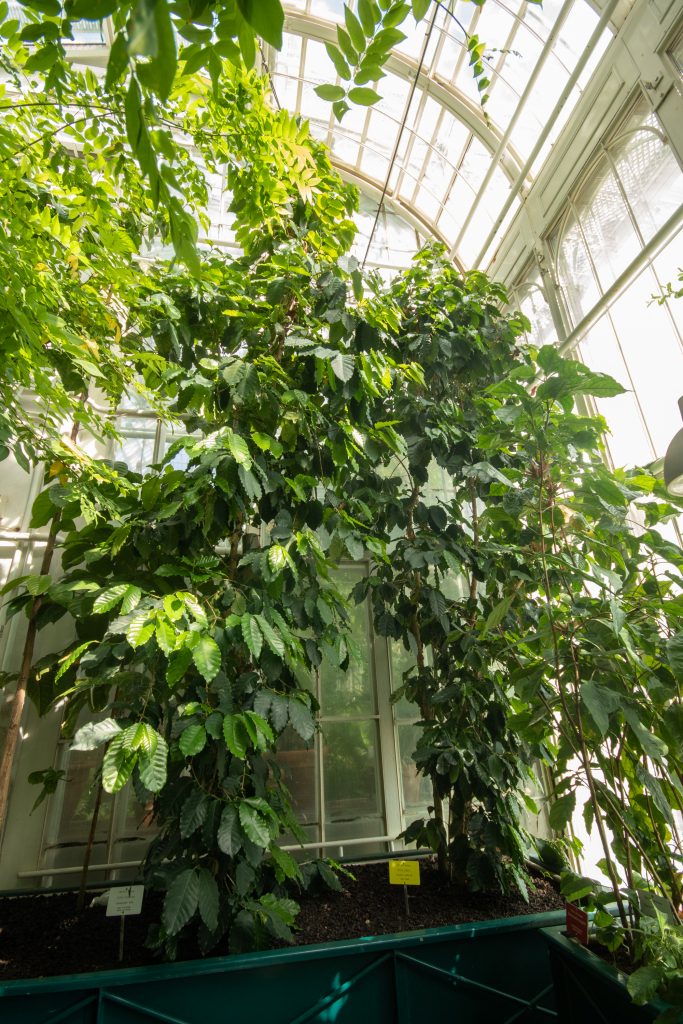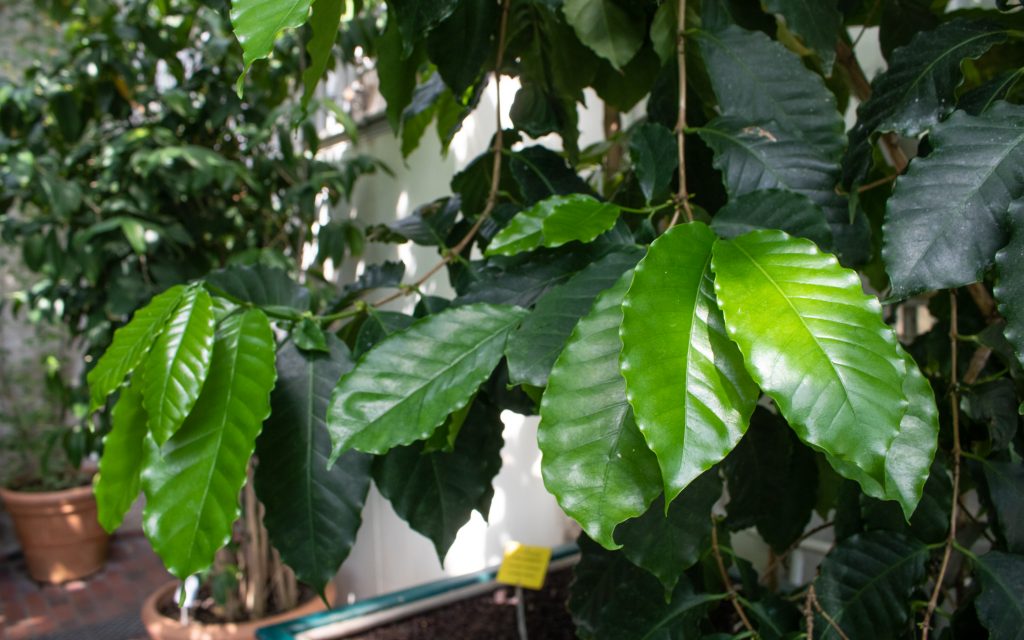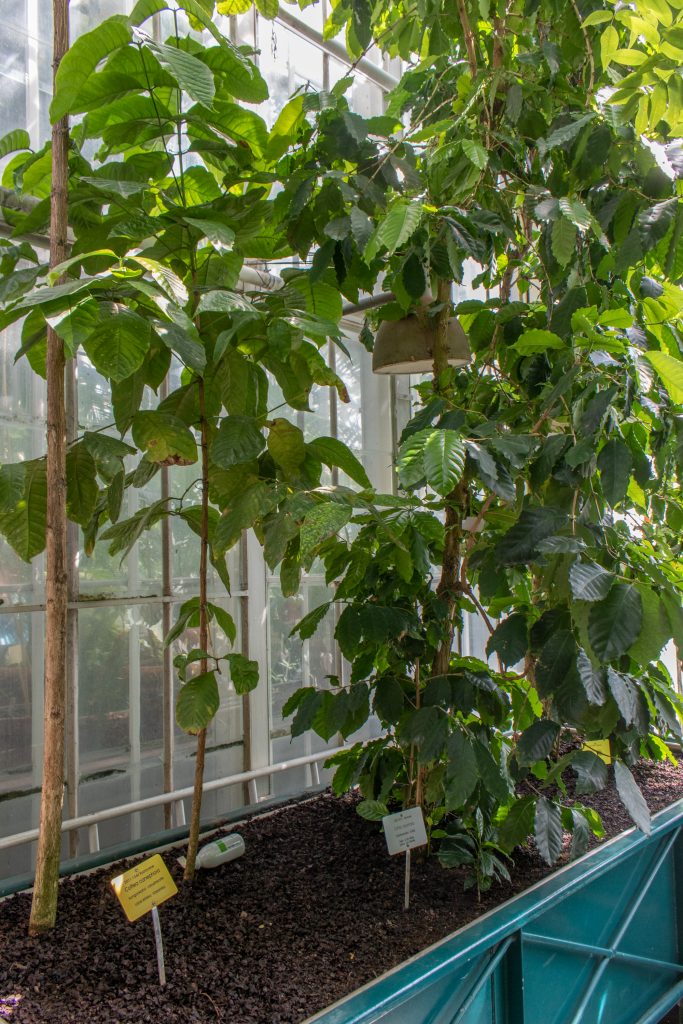In the need of a pick-me-up
The majority of the world’s coffee production is made up of two plant species: Arabic and robusta coffee. Most of the coffee brands we use in our coffee makers are made with Arabic coffee, while instant coffees and espressos are made from the stronger-flavoured robusta.
The caffeine generated by the coffee bush is the most widely used psychoactive substance in the world. It is also the result of millions of years of evolution – the caffeine keeps insects and microbes at bay. When the leaves fall down, some caffeine winds up in the soil, where it prevents other plants from growing near the coffee plant.
Take a look at the Arabic coffee bush in the corner. It often has green (unripe) or red (ripe) berries. Each berry contains two seeds, or coffee beans. Peter Poczai, curator at Luomus, once tried to use the beans of this coffee bush to make coffee. The result was two mugfuls, which were distributed among 20 employees of the Botany Museum to taste. The taste was described as pleasant, a little stronger than typical filter coffee.
This locally sourced brew was an exception however, as normally the journey of coffee from the bush to the Finnish coffee cup is long. The greatest environmental impact of coffee takes place in its country of origin in the form of deforestation, erosion and water pollution. By choosing coffee with a sustainability certification, you can support responsible coffee production.


